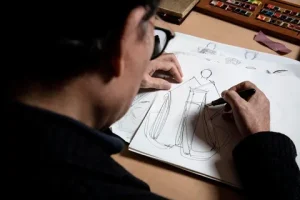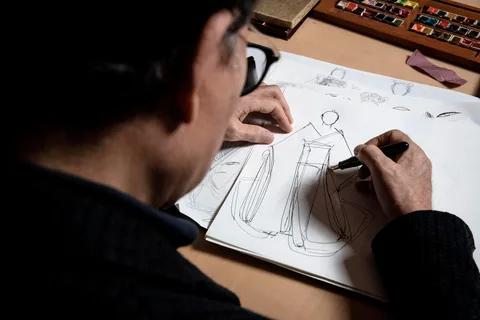Fashion has always been a blend of artistry and precision. Behind every stunning garment on the runway or every perfectly fitted piece on a retail shelf, there is an entire process of design, drafting, cutting, and assembly. Traditionally, this process was painstakingly manual, requiring skilled artisans to draft patterns on paper and cut fabric by hand. However, in today’s fast-paced and competitive fashion landscape, digital tools and advanced machinery are transforming the way designers and manufacturers work.
One of the most revolutionary advancements in recent years is the introduction of Pattern making software that simplifies, speeds up, and perfects the design process. At the same time, automated fabric cutters are helping businesses achieve unmatched precision and efficiency, minimizing waste while maximizing productivity. Together, these tools are reshaping the future of the textile and fashion industries.
From Paper Patterns to Digital Innovation
In the past, fashion design relied heavily on manual drafting. Designers would create intricate sketches, then translate those designs into physical paper patterns. These patterns were fragile, prone to damage, and required meticulous adjustments if any changes were needed. For manufacturers producing garments at scale, making alterations to patterns was time-consuming and expensive.
This is where technology entered the picture. Modern pattern making software has revolutionized the way designers and manufacturers create garments. With these digital tools, patterns can be drafted on-screen with precision, graded for different sizes instantly, and modified without starting from scratch. Designers no longer have to worry about wasted time or inaccuracies caused by manual drafting. Instead, they can focus on creativity while relying on the software for technical accuracy.
Advantages of Pattern Making Software
The rise of digital solutions in the fashion industry is not just about convenience; it’s about addressing real challenges faced by manufacturers and designers. Some key benefits include:
- Accuracy and Consistency
Digital drafting ensures patterns are always accurate, eliminating human error. Once a base pattern is created, it can be reused and modified without losing consistency. - Time Savings
Alterations that once took hours or days can now be done in minutes. This speed is crucial for businesses trying to keep up with fast fashion demands. - Grading for All Sizes
One of the most powerful features of pattern making software is automatic grading. Instead of manually adjusting for multiple sizes, the software generates precise variations, ensuring a consistent fit across all garments. - Collaboration Made Easy
Digital files can be shared quickly across teams, whether they’re in the same building or across the globe. This fosters better collaboration in international fashion houses and supply chains. - Sustainability Benefits
Less physical waste is generated because adjustments and sampling happen virtually before fabric is even touched. This aligns with the industry’s growing push for eco-friendly practices.
The Role of Fabric Cutters in Modern Manufacturing
Once a pattern has been finalized, the next critical step is cutting the fabric. Traditionally, this was done by skilled professionals using scissors or manual cutting tools, often requiring immense focus and dexterity. However, as demand for precision and scalability has grown, manual cutting has shown its limitations.
This is where advanced Fabric cutters come into play. These computer-controlled machines are capable of cutting through multiple layers of fabric with exceptional accuracy. Not only do they significantly speed up production, but they also reduce material waste by optimizing how patterns are laid out on fabric.
Why Fabric Cutters Are a Game-Changer
- Speed and Efficiency
Automated cutters can handle bulk orders in a fraction of the time compared to manual cutting, making them ideal for mass production environments. - Precision at Scale
No matter how skilled a human cutter may be, it’s almost impossible to replicate the accuracy of CNC-guided fabric cutters. Each cut is precise, ensuring uniformity across thousands of garments. - Reduced Waste
With advanced nesting software integrated into many cutting machines, patterns are arranged on fabric in the most efficient way possible, drastically cutting down material wastage. - Versatility
Modern fabric cutting machines can handle a wide range of materials—from delicate silks to heavy-duty industrial textiles—making them suitable for various industries beyond fashion, such as upholstery, automotive, and technical textiles. - Lower Labor Costs
Automated systems reduce reliance on manual labor, which not only lowers costs but also allows businesses to reallocate human resources toward design and quality control.
The Symbiosis of Software and Machinery
What makes today’s fashion industry truly exciting is the seamless integration of digital design and automated production. A designer can draft a pattern using cutting-edge software, instantly grade it for multiple sizes, and then send it directly to a digital cutter. The result? Faster turnaround times, consistent quality, and the ability to respond quickly to market trends.
This synergy also empowers smaller fashion brands to compete with larger corporations. Previously, advanced machinery and software were seen as luxuries affordable only to big manufacturers. Now, more companies are adopting these tools, creating a more level playing field.
The Future of Fashion Production
Looking ahead, the combination of digital pattern design and automated cutting will continue to evolve. Artificial intelligence and machine learning are being integrated into pattern making software to predict fit issues and suggest design improvements before garments even reach production. Similarly, fabric cutters are becoming smarter, with advanced sensors and automation that further reduce human intervention.
Sustainability will also play a key role. By reducing waste and optimizing fabric use, these technologies will support eco-conscious production practices. As consumer demand shifts toward ethical and sustainable fashion, businesses equipped with these tools will have a competitive edge.
Final Thoughts
The fashion industry has always been about innovation—whether in style, materials, or processes. The rise of digital tools like pattern making software and automated fabric cutters represents one of the most significant transformations yet. By combining creativity with precision technology, designers and manufacturers can bring their visions to life faster, more accurately, and more sustainably than ever before.
Fashion may be timeless, but the tools behind it are constantly evolving—and the future looks sharper, smarter, and greener.








